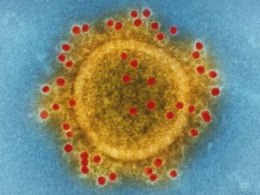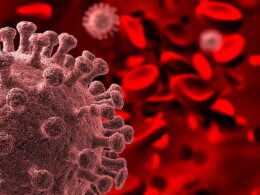This year the world will have to build up resilience so that we can live with Sars-Cov-2 and its descendants, in a way that causes less disruption while still protecting those who are most vulnerable.
Financial Times
January 3, 2022
Key points (Summarized by the Editor of the blog)
- Omicron, by far the most contagious coronavirus variant to date,
- The top priority is, therefore, to vaccinate the whole world — as it should have been for the past year
- Unfortunately, Covid-19 vaccine inequity has never been greater, with just 10 per cent of the population in low-income countries having received at least one jab,
- We will have to rely on the immunity provided by annual inoculations … and by repeated exposure to what will sooner or later become an endemic infection,
- Governments and regulators must encourage the development of new vaccine technologies to supplement the near duopoly that Moderna and BioNTech/Pfizer enjoy in the developed world with their mRNA products,
- At the same time, more investment should be directed towards antiviral drugs
- Another vital area that must be reinforced is diagnosis and surveillance,
- Efforts to control the pandemic have been justified so far in the context of a global health emergency but they cannot continue indefinitely. The collateral damage — to mental health and wellbeing, social cohesion and the global economy — would be too great.
Omicron, by far the most contagious coronavirus variant to date, is so rampant around the world that it is easy to feel despondent about the prospects of the pandemic easing — let alone coming to an end — in 2022.
But there are good reasons to think that Covid-19’s toll on global health and its wider social and economic impact could wane this year, if governments and health authorities follow appropriate policies and if this volatile virus develops in the way that many scientists believe is most likely.
A debate is growing between those who think new pathogens such as Sars-Cov-2 tend to cause milder disease as time passes and those who say they are just as likely to evolve in a more virulent direction.
Without taking sides, it is reasonable to conclude that the interaction between virus and the human immune system means that the more people acquire some protection against severe
Covid-19 symptoms through vaccination or infection, the better the outlook.
No conceivable descendant of Sars-Cov-2 could have enough mutations in the right places to escape fully the attentions of both antibodies and T-cells generated by prior exposure to an earlier variant.
The top priority is, therefore, to vaccinate the whole world — as it should have been for the past year.
Unfortunately, Covid-19 vaccine inequity has never been greater, with just 10 per cent of the population in low-income countries having received at least one jab, according to the World Health Organization, while wealthy nations are rolling out third or even fourth shots.
As the WHO says, with global vaccine production close to 1.5bn doses a month, there will be enough for these booster programmes to continue, while directing far more supplies to poorer countries than in 2021, through schemes such as Covax.
Although industrialised nations are justified in protecting their populations with boosters for adults and campaigns to extend vaccination to children, we cannot expect to keep jabbing people every four to six months for very long in the face of new variants.
We will have to rely on the immunity provided by annual inoculations — preferably with a new generation of products that are effective against all coronavirus variants — and by repeated exposure to what will sooner or later become an endemic infection.
Governments and regulators must encourage the development of new vaccine technologies to supplement the near duopoly that Moderna and BioNTech/Pfizer enjoy in the developed world with their mRNA products.
At the same time, more investment should be directed towards antiviral drugs that could play a bigger role in suppressing symptoms in those who are infected.
Another vital area that must be reinforced is diagnosis and surveillance.
Requirements here range
- from ensuring enough quick lateral flow tests are available for people to check whether they are infected before meeting others
- to building up more genomic sequencing capacity worldwide to monitor the emergence of new variants.
Whatever slim chance we might have had at the beginning of 2020 to eliminate Covid-19 has long gone.
Efforts to control the pandemic have been justified so far in the context of a global health emergency but they cannot continue indefinitely.
The collateral damage — to mental health and wellbeing, social cohesion and the global economy — would be too great.
This year the world will have to build up resilience so that we can live with Sars-Cov-2 and its descendants, in a way that causes less disruption while still protecting those who are most vulnerable.
Originally published at https://www.ft.com on January 3, 2022












